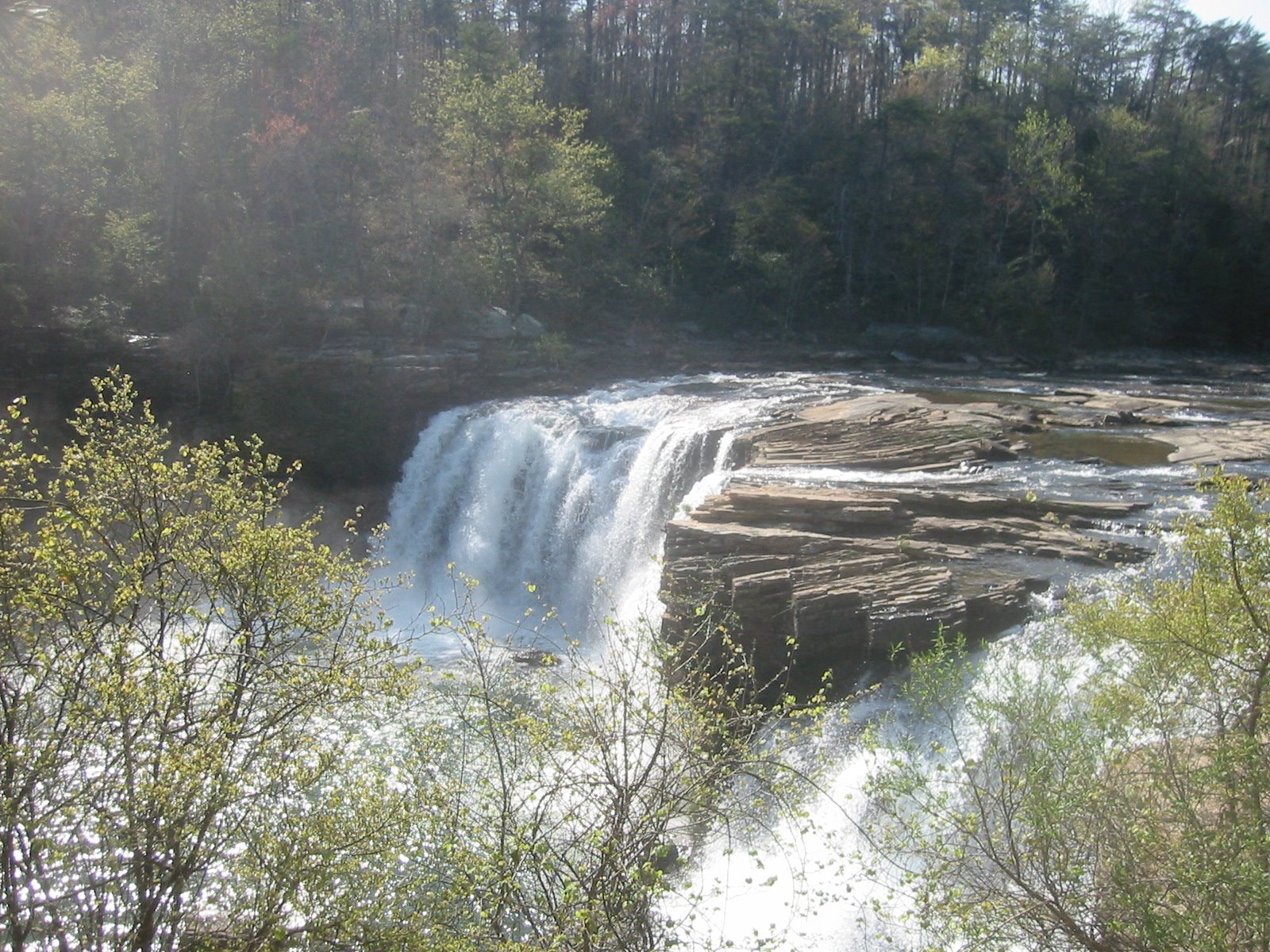2009 Omnibus Public Land Management Act
Obama Signs the Omnibus Public Lands Management Act of 2009.
THE PRESIDENT: Well, thank you so much, Ken, for that extraordinary introduction and for the work that you and your team are undertaking at the Department of the Interior. We're going to add a little bit to your plate today as a consequence of this extraordinary piece of legislation.
I want to thank all the members of the legislature who helped to craft this. Many of them are on the stage here today. Obviously I've got to single out the Speaker of the House, Nancy Pelosi, for her extraordinary leadership, but also our Leader in the Senate, Harry Reid, who worked so diligently on this bill and made sure that it got done. And so please give all of these legislators a big round of applause. (Applause.)
If you'll indulge me, there are just a couple other people I want to acknowledge: Nancy Sutley, who is the Chair of our Council on Environmental Quality, who is here. Where's Nancy? There she is, right in front. (Applause.) Jane Lubchenco, who is the Administrator of the National Oceanic and Atmospheric Administration. Please, Jane -- (applause.) A couple of great friends from Indian Nation -- President Joe Shirley of Navaho Nation, who is here. Go ahead, Joe, stand up. (Applause.) And Tribal Chairman Robert Bear, of the Duck Valley Shoshone-Paiute Tribes. Thank you so much. (Applause.)
It is fitting that we meet on a day like this. Winter's hardships are slowly giving way to spring, and our thoughts naturally tend to turn to the outdoors. We emerge from the shelter offered by home and work, and we look around and we're reminded that the most valuable things in this life are those things that we already possess.
As Americans, we possess few blessings greater than the vast and varied landscapes that stretch the breadth of our continent. Our lands have always provided great bounty -- food and shelter for the first Americans, for settlers and pioneers; the raw materials that grew our industry; the energy that powers our economy.
What these gifts require in return is our wise and responsible stewardship. As our greatest conservationist President, Teddy Roosevelt, put it almost a century ago, "I recognize the right and duty of this generation to develop and use the natural resources of our land; but I do not recognize the right to waste them, or to rob, by wasteful use, the generations that come after us."
That's the spirit behind the bipartisan legislation I'm signing today -- legislation among the most important in decades to protect, preserve, and pass down our nation's most treasured landscapes to future generations.
Many senators and congressmen here deserve enormous credit for making this bill possible. I'm grateful to all their hard work. As I mentioned before, Harry Reid made this a top priority. He made sure this was the first bill the Senate passed this year. This day would not be possible without his tireless dedication to protecting our treasured lands.
This legislation -- just to give you a sense of the scope -- this legislation guarantees that we will not take our forests, rivers, oceans, national parks, monuments, and wilderness areas for granted; but rather we will set them aside and guard their sanctity for everyone to share. That's something all Americans can support.
And that's why so much of this legislation, some of it decades in the making, has the backing of Americans from every walk of life and corner of this country. Ranchers and fishermen, small business owners, environmentalists, conservative Republicans and liberal Democrats on the local, state and federal levels -- all united around the idea that there should be places that we must preserve; all doing the hard work of seeking common ground to protect the parks and other places that we cherish.
We're talking about places like Colorado, where this bill will realize a vision 35 years in the making by protecting the wild back country of Rocky Mountain National Park, which attracts 3 million visitors a year.
Folks in communities around this park know they don't have to choose between economic and environmental concerns; the tourism that drives their local economy depends on good stewardship of their local environment. And year after year, these communities have worked together with members of Congress in an attempt to ensure that Rocky Mountain National Park will forever remain as breathtaking as it is today.
And that is what this bill does from coast to coast. It protects treasured places from the Appalachians of Virginia and West Virginia to Michigan's Upper Peninsula; from the canyons of Idaho to the sandstone cliffs of Utah; from the Sierra Nevadas in California to the Badlands of Oregon.
It designates more than 2 million acres across nine states as wilderness; almost as much as was designated over the past eight years combined.
It creates thousands of miles of new scenic, historic, and recreational trails, cares for our historic battlefields, strengthens our National Park System.
It safeguards more than 1,000 miles of our rivers, protects watersheds and cleans up polluted groundwater, defends our oceans and Great Lakes, and will revitalize our fisheries, returning fish to rivers that have not seen them in decades.
And it wisely faces our future challenges with regard to water. This bill assesses how growth and climate change will affect our access to water resources, especially in the West and Southwest, and it includes solutions to complex and long-simmering water disputes. It's hard to overstate the real and measurable impact this will have on people's lives -- people like Frank Chee Willetto, a Navajo code talker in World War II, who's joined us today. And because of this legislation, Frank, along with 80,000 others in the Navajo Nation, will have access to clean running water for the very first time. That's something worth applauding. (Applause.) Thank you for your service. (Applause.)
When coupled with the Recovery Act, which makes an historic $3 billion investment creating jobs that will restore and protect our landscapes and our ecosystems, preserve our national monuments, retrofit our facilities for energy efficiency and renewable energy-- taken together, today's legislation takes another step toward fulfilling Teddy Roosevelt's vision for this land that we love.
It's a vision that sees America's great wilderness as a place where what was and what is and what will be -- all are the same; a place where memories are lived and relived; a place where Americans both young and young at heart can freely experience the spirit of adventure that has always been at the heart of the rugged character of America.
Now, the legislation I'm signing today also makes progress on another front for which many Americans have long waited.
The Christopher and Dana Reeve's Paralysis Act is the first piece of comprehensive legislation specifically aimed at addressing the challenges faced by Americans living with paralysis. (Applause.) Many folks and organizations from across the disability community worked hard to get this bill passed, and we are grateful to each of you for bringing us that much closer to providing all Americans with disabilities a full, fair and equal opportunity to achieve the American Dream.
This act creates new coordinated research activities through the National Institutes of Health that will connect the best minds and best practices from the best labs in the country, and focus their endeavors through collaborative scientific research into the cure for paralysis, saving effort, money, and, most importantly, time.
It promotes enhanced rehabilitation services for paralyzed Americans, helping develop better equipment and technology that will allow them to live full and independent lives free from unnecessary barriers. And it will work to improve the quality of life for all those who live with paralysis, no matter what the cause.
That's the mission of the Christopher and Dana Reeve Foundation. In the lobby of their facility in New Jersey sits Christopher's empty wheelchair. And his son, Matthew Reeve, was once asked if the sight of it ever saddened him, and he replied no. He said, "Empty chairs -- that was Dad's goal," he said. "We hope there will be many more of them."
Matthew is here with us today. And the legislation I'm about to sign makes solid progress toward the realization of that hope and the promise of a brighter future.
All in all, this legislation is that rare end product of what happens when Americans of all parties and places come together in common purpose to consider something more than the politics of the moment. It's the very idea at the heart of this country: that each generation has a responsibility to secure this nation's promise for the next. And by signing this bill into law, that's what we're doing today.
So -- is Matthew here, by the way? Matthew, come on up. (Applause.) Let's sign this bill. (Applause.)
Original Source :
http://www.nytimes.com/2009/03/30/us/politics/30lands-text.html
 As the one-year anniversary of the state raid on the YFZ Ranch approaches, today’s Oprah Winfrey Show will focus on the West Texas polygamist community.
As the one-year anniversary of the state raid on the YFZ Ranch approaches, today’s Oprah Winfrey Show will focus on the West Texas polygamist community.







